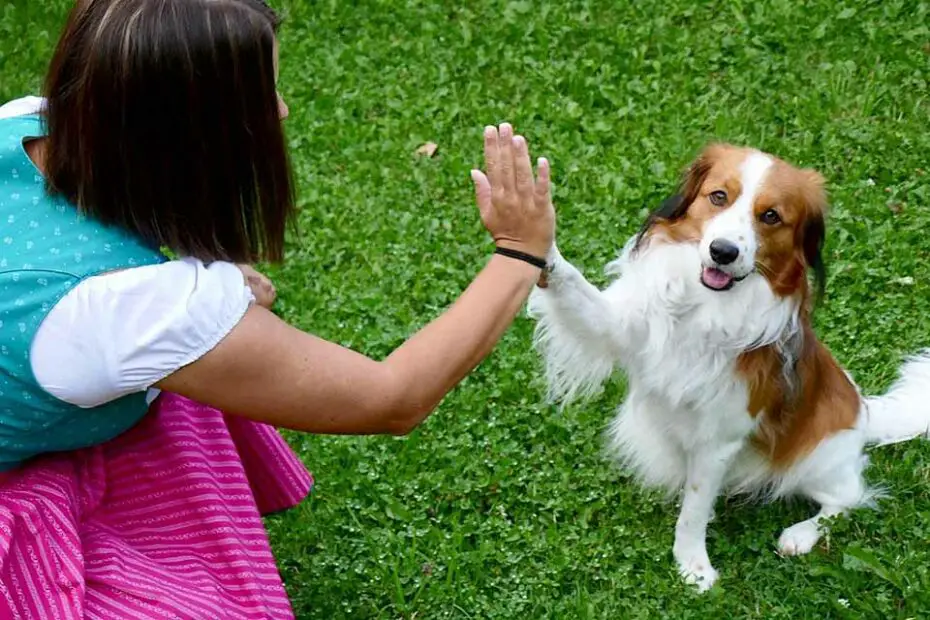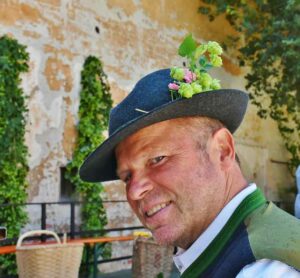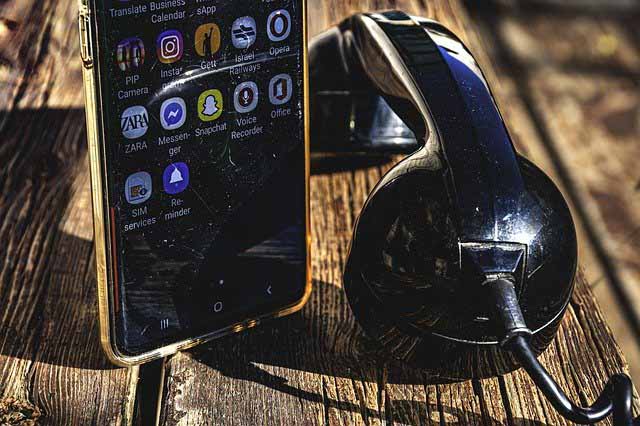Greetings are among the first phrases to learn in a new language. After all you want to learn to address people correctly and make a good first impression. Remember, there’s only one chance to make a first impression! And using the local greeting phrases is always an easy way to show people you respect their heritage and win them over from the start.
So let’s take a look at the different possibilities of how to say hello in the German language. As you will see we’ve covered many different ways to say hello: From “Guten Tag” to “Guten Abend”, formal or informal, greetings depending on the time of day, greetings from Northern Germany as well as Southern Germany and even greetings for special trades.
Table of Contents
- Formal Ways of saying Hello in German
- Less Formal Ways how to say Hello in German
- German Greetings according to the Time of Day
- Regional Greetings in German
- Job-Related German Greetings
- Answering the Phone in German
- The simplest German Greeting
Formal Ways of saying Hello in German

practice in Germany when welcoming your host. Or at least it used to be until Covid-19 came along…
- Guten Tag
“Good day!” This is the most common form of formal greeting in the German language. It translates directly as “good day”, and works in most situations and can be used all day long. The only circumstance where it could be seen as a tad too formal is when you meet family or close friends. But apart from that, if you only want to remember one phrase, “Guten Tag” is the one! - Herzlich Willkommen
A phrase to welcome visitors, whether it’s in your home or at your office. Can also be shortened to “Willkommen”. The “Herzlich” means a heartily welcome. - Schön Sie kennenzulernen
When you are introduced to someone new, you may tell them how pleased you are getting to know them. If it’s someone you already heard a lot about, but have never met so far, you may say “Schön, Sie endlich kennenzulernen.” The “endlich” means “eventually” as in “I’m delighted to meet you eventually.” - Schön Sie zu sehen
In case the person you meet isn’t new to you, but in fact an old friend or acquaintance, you can use this phrase to say “nice to see you.” - Wie geht es Ihnen?
Different to the English language where “How do you do” is considered a form of welcome, the German “Wie geht es Ihnen” is more of a follow-up question to one of the greetings above. So you should reply with something like “Mir geht es gut, danke.” “I’m fine, thank you.” (For the less formal “Wie geht’s?” see below.)
Less Formal Ways how to say Hello in German
- Hallo
As you will have guessed, the direct translation of “Hello” in English. In informal situations it’s often used as the only word for welcoming someone.
In a business meeting it’s either used in combination with other greeting phrases, such as “Hallo, Frau Schmidt! Schön, Sie endlich kennenzulernen.” or as a short reply, e.g. when being introduced to a number of people.
Also used when you pick up the phone and don’t want to give your full name. - Hi
Meaning and pronunciation are the same as in English. - Na?
Can be translated as “Well?” or “Yeah?”. It’s a very informal, rather lazy greeting. - Wie geht’s?
Short form of “Wie geht es dir?” How are you? How’s it going? Other than in English, “Wie geht’s?” is rather used as a follow-up to one of the other greeting phrases. And it’s really meant as a question, so you should give an answer.
Person A: “Wie geht es dir?”
Person B: “Mir geht’s gut.” (I’m fine.) or “Gut, danke.” (Fine, thanks.)
These are perfectly apt replies. (There is also the more formal version “Wie geht es Ihnen”, see above.) - Was ist los?
“Was ist los” is the German form of “What’s up?” Typically only used amongst young people well familiar with each other. - Alles klar?
Another expression almost exclusively used by younger Germans. “Alles klar?” means “Is everything alright?” In this instance it is less of a serious question, so the answer usually is “alles klar!” as well. “Yes, everything is alright!”
“Alles klar” literally means “all clear.”
German Greetings according to the Time of Day
The usual ways to say hello differ depending on the time of day, just as they do in English. So let’s take a look at the various German greetings over the course of a day.
- Guten Morgen
“Good Morning” in German. Used from the early hours until about lunch time at latest. - Guten Tag
As mentioned above, can be used all day. Before 10 am, you’d rather say “Guten Morgen”, but you can use “Guten Tag” any time. “Guten Tag” is the most common way to say hello in German. - Guten Abend
“Good evening!” “Guten Abend” can be used from about dinner time until midnight. So it’s the perfect greeting when meeting an acquaintance whilst taking a walk in the evening or upon entering a restaurant. - Gute Nacht
“Good night!” – “Gute Nacht” is rarely used as a salutation, but it is commonly used to wish someone a pleasant night and good sleep. So it’s less of a welcome, but more like saying goodbye (“Auf Wiedersehen”) in German.
Regional Greetings in German
Of course there are also different ways of how to say hello in German depending on the geographical region. German people often speak a dialect, that is a regional variant of the common High German or “Hochdeutsch”, which is the official language in Germany, Austria and some parts of Switzerland. So people from Northern Germany use different greetings than people from Southern Germany, as do people from other German speaking countries such as Switzerland or Austria.
Greetings in Northern Germany
- Moin
In many countries northeners are considered to be rather untalkative, at least compared to people from the South. And Germany is no exception to this rule, as people from the northern federal states (Schleswig-Holstein, Hamburg, Bremen, Niedersachsen and Mecklenburg-Vorpommern) are considered less open and less communicative than people from the South.
But don’t be scared by this. They are generally just as kind as their fellow countrymen from further south. And once you win their heart, you’ll have made true friends.
However, the fact remains that they are rather short on words. And the fact that their usual greetings consist of only one word, may illustrate this.
In the North “Moin” is a universal greeting and can be used all day long. Which regularly confuses people from the South, as they assume “Moin” is northern dialect for “Morgen (Morning),” and so the greeting could only be used before lunch.
But whether the word really has anything to do with “Morning” is still a matter of debate. Many linguists see it more closely related to the Frisian “moi” or Dutch “mooie dag” (nice day.) - Moin Moin / Moinsen
These are simple variations of the word “Moin.” In some areas the locals consider “Moin Moin” as a version only used by tourists who are desperate for a longer greeting. But I also know many Northerners who use it, so not all of them are so strict.
When you use the doubled version, you should emphasize the second word. That gives the whole thing a bit more vigour.
The “Moinsen” variant is typically used by a younger crowd, trying to give the old greeting a new spin. - Tach
Another one word greeting and this time the etymology is clear, “Tach” is the northern version of “Tag” (day). Northeners in Germany have a tendency to pronounce the letter “g” just like the German “ch”. That’s why many inhabitants of “Hamburg” call their city “Hamburch”.
Tach is also a common one word greeting in the North, though less useful in a formal surrounding. You may use it to say hello to your neighbor, but probably wouldn’t do so when meeting your bank manager. And if you do, he might consider you to be a yokel.
Greetings in Southern Germany / Austria
- Grüß Gott
The most common form of greeting in Bavaria and other (mostly catholic) parts of Southern Germany as well as Austria.
In it’s original form it meant something along the lines of “may god meet (or greet) you with kindness” or “may god bless you.” In the middle ages the word “gruß” meant both a greeting as well as a blessing, but it lost this double sense, especially in the northern, protestant parts of Germany.
Additionally the greeting has been shortened to a two word form, which translates directly to “greet god.”
This imperative is confusing for many people from other parts of Germany. So they often reply in a mocking manner with answers like “If I see him” or “Hopefully not too soon.”
See also https://en.wikipedia.org/wiki/Grüß_Gott - Grüß dich
A less formal version of the above, meaning “greetings to you.” As “grüß dich” leaves out the mentioning of god, it is also more popular with less religious people. - Servus
Another often heard greeting in southern parts of Germany and the German speaking Austria. This one stems from the Latin word for servant or slave and originally meant, “how may I serve you?” You can hear it being used as a greeting, but ist also a form of goodbye in German.
Greetings in Switzerland
Parts of Switzerland are also German speaking, so they have a German greeting. In other parts people speak French or Italian.
- Grüezi
In some parts of Switzerland the short Bavarian salutation “Grüß Gott” (see above) has been shortened even more to only one word. Many people assume it’s short for “(Ich) grüß Sie”, i.e. “I greet you”. But it’s origins are rather the same as “Grüß Gott.”
Job-Related German Greetings
Apart from regionally different ways to say hello in German, there are also some greetings mainly used by members of a certain trade.
- Ahoi
A maritime expression, used originally to call another ship. Nowadays often used as a greeting by sailing enthusiasts and other water sportsmen. - Glück auf / Glückauf
This phrase stems from the mining profession and translates roughly as “luck up!”
There are two possible meanings; one is to wish a miner good luck and that he may do up (discover) a new vein of ore. The other one is simply to come up again after the shift. Not only working in deep, dark tunnels was dangerous. But getting down into the earth over wooden ladders and steep slopes and getting out again, especially after a 10 hour work shift was very challenging and inflicted many casualties.
The phrase “Glück auf” was often used as a general greeting phrase in regions where many men worked in the (coal) mining profession (often for several generations). It was their way to say hello. But it’s less common nowadays, due to the demise of the coal mining industry. - Glück zu
“Luck to,” a phrase originating in the milling profession. In old times young men wanting to become a miller had to travel from mill to mill in order to learn from different masters and become knowledgeable in every aspect of the trade. Upon arrival at a new mill they greeted the miller with “Glück zu”, meaning they were bringing luck from their former mill to the new one, and asked for a job. - Horrido
Hunting has a very long tradition in Germany and over the centuries hunters formed their very own kind of language. Many expressions used by hunters are unintelligible for outsiders.
The expression Horrido used as a greeting, doesn’t stem from the English word “horrid”. It’s origins lie in the cry “Ho, Rüd(e), Ho!”, used by dog handlers trying to push on their (male) hunting dogs.
Later on, Horrido has also been used by fighter pilots as a kind of war cry. - Waidmannsheil / Weidmannsheil
Waidmann is an old -fashioned expression for a huntsman, and “heil” stems from the latin “salve” as a salutation.
Waidmannsheil is a very common phrase instead of saying hello in German amongst hunters. Whether you write it with “ai” or “ei” is a matter of debate, but the pronunciation is the same.
But not only the spelling is difficult, the correct reply isn’t easy either. If used as a greeting phrase between hunters, the correct reply is another “Waidmannsheil.”
When used as a compliment for a successful hunt, the correct reply is “Waidmannsdank.”
Which is also used as a reply when greeted with “Waidmannsheil” by a non-hunter, or if it’s not used as a salutation but in the sense of “good luck.”
Answering the Phone in German
There are a couple of options, when it comes to answering the phone in German.
- Saying your name
Usually used in formal situations or when you don’t know who is calling you. When using a company phone, it is common to also say the company name before or after your own name. Some companies even have rulesets how their employees should answer the phone. - Hallo
On your private phone, you may use a simple “Hallo” (Hello in German) even when the caller is unknown to you. - Saying the callers name
Most people use cell phones nowadays and as we have our usual contact numbers in the address book, the phone will show you who’s calling. So it’s common to use the callers name as a greeting.
Note that “Guten Tag” is the universal greeting in almost any situation, but not on the phone! When you are the one being called you may use it, but only after the caller introduced himself.
You, answering the phone: “Ben Smith”
The caller: “Ja, guten Tag. Hier ist Kate Miller.” (Yes, good day. This is Kate Miller.)
You: “Ah, guten tag Frau Miller!” (Ah, good day Mrs. Miller!)
So the caller may use “guten Tag” as part of his introduction, but the person being called usually only uses it as a reply.
Congratulations, you just learned how to say hello in German under any possible circumstance. But luckily you don’t have to remember them all.
The simplest German Greeting
When you’re going on holiday, a simple “Hallo” will suffice in most situations.
And “Guten Tag” can be used all day long in more formal situations, like business meetings, upon entering a shop or restaurant or at the theater, opera and so forth. It’s the best way to greet someone.






